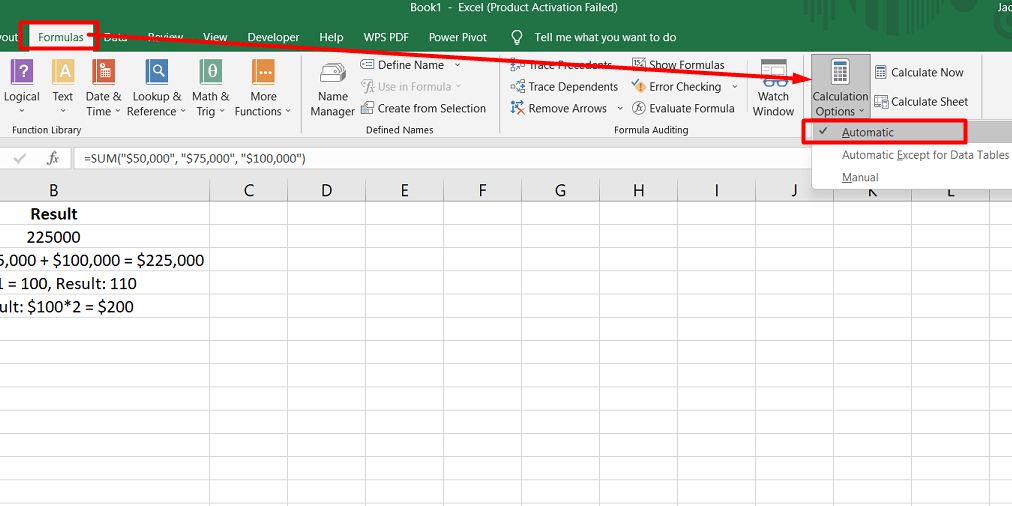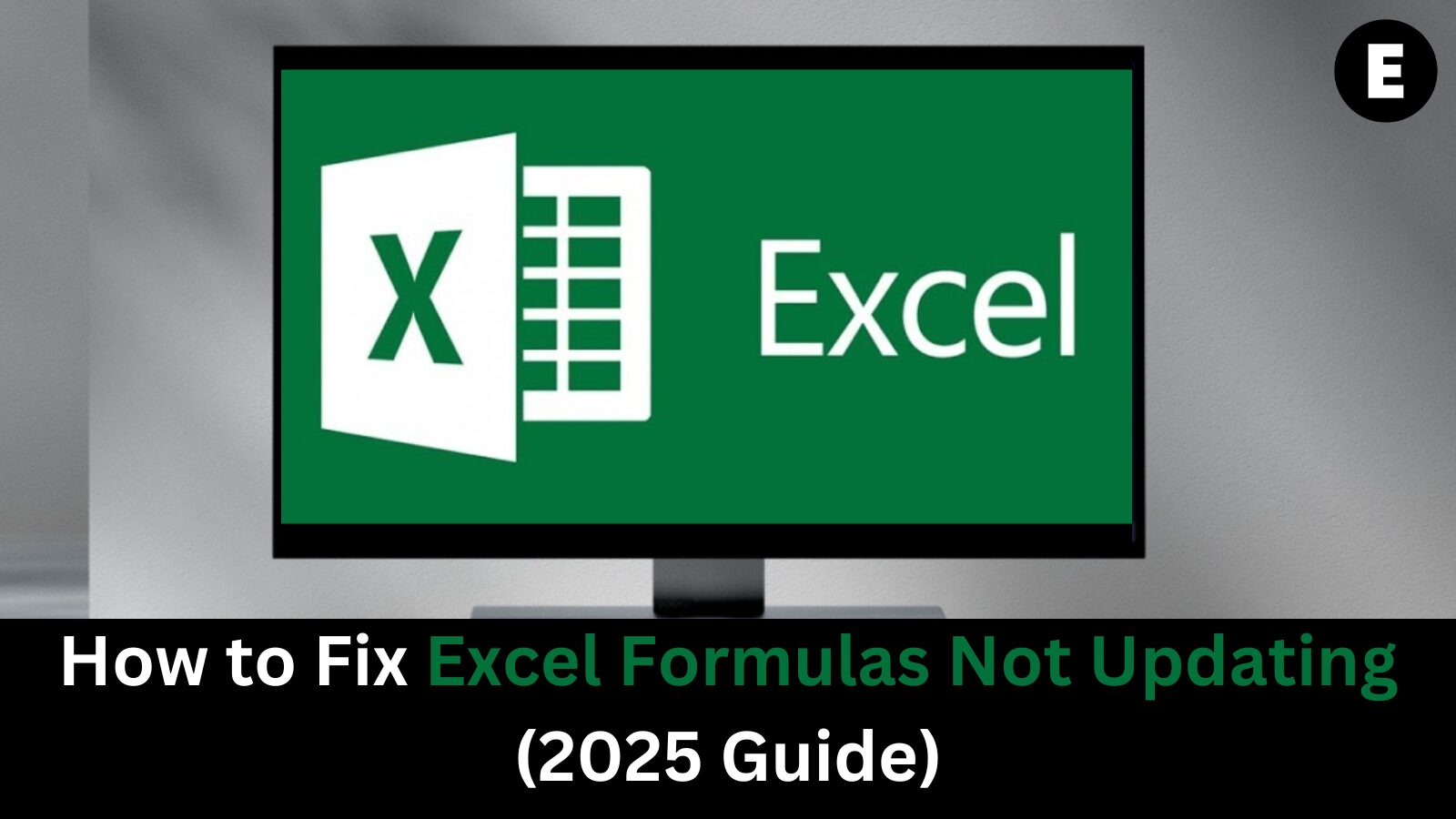Are you experiencing issues with Excel formulas not updating or calculating correctly? You’re not alone! Formulas are a crucial part of Excel, and when they stop working, it can be frustrating.
In this guide, we’ll explore why Excel formulas may fail to calculate, update, or return errors or incorrect results. Whether you’re dealing with formulas that show outdated values or cells displaying the formula itself instead of the result, we’ve got you covered.
Let’s dive into the common causes and solutions to ensure your Excel formulas update and calculate automatically!
Match All Opening and Closing Parentheses in a Formula
When working with complex formulas in Excel, it’s crucial to match opening and closing parentheses correctly. Parentheses indicate the order of calculations within the formula, and Excel helps by color-coding parentheses as you enter them.
If you miss a closing parenthesis or have an extra one, Excel will detect the imbalance and display an error message. It will also suggest a correction to balance the parentheses pairs.
Tips to avoid formula errors related to mismatched parentheses:
- Double-check your formulas: Ensure each opening parenthesis has a corresponding closing parenthesis.
- Use indentation: This visually aligns parentheses pairs, helping you spot any missing or extra ones.
- Utilize Excel’s color-coded highlighting: Excel highlights matching parentheses in different colors, making it easier to identify any imbalances.
Enter All Required Arguments in an Excel Function
When using Excel functions, ensure that you include all the required arguments within the formula. Each function has specific arguments that need to be provided, and some functions have optional arguments enclosed in square brackets [ ].
- Missing arguments: Excel will display the error message “You’ve entered too few arguments for this function.”
- Excess arguments: Excel will show the error “You’ve entered too many arguments for this function.”
Tips to avoid these errors:
- Ensure you provide all required arguments for a function.
- Double-check that the number of arguments does not exceed what the function’s syntax allows.
Do Not Nest More Than 64 Functions in a Formula
Excel allows nesting up to 64 functions within a formula in newer versions like Excel 2016, Excel 2013, and Excel 2010. Older versions like Excel 2003 have a much lower limit of just 7 nested functions.
If you exceed the nesting limit, Excel will display an error message.
Tip to avoid exceeding the nesting limit:
- Break down complex formulas into smaller parts or use alternative approaches to achieve your desired result.
Don’t Enclose Numbers in Double Quotes
Enclosing numbers in double quotes turns them into text, which prevents Excel from using them in calculations.
Example:
- Wrong:
=IF(A1>0, "1")(1 will be treated as text) - Correct:
=IF(A1>0, 1)(1 is treated as a number)

Avoid enclosing numbers in double quotes unless you want them to be treated as text.
Enter Numbers Without Any Formatting
Avoid adding formatting symbols (like currency signs or commas) within Excel formulas. These symbols can interfere with Excel’s ability to interpret numbers as numerical values.
Tip to ensure proper calculation:
- Enter numbers in their raw form (e.g.,
50000instead of$50,000). - Apply the desired formatting later using the Format Cells dialog (Ctrl + 1).

Excel Formulas Not Updating
If your formulas aren’t updating and continue to show old values, it’s likely because the Calculation setting is set to Manual instead of Automatic. You need to change it to Automatic to resolve this issue.
How to change the calculation setting in different versions of Excel:
- Excel Ribbon:
- Go to the Formulas tab.
- In the Calculation group, click Calculation Options.
- Select Automatic from the drop-down menu.

- Excel Options:
- Excel 2003: Click Tools > Options > Calculation > Automatic.
- Excel 2007: Click the Office button > Excel Options > Formulas > Workbook Calculation > Automatic.
- Excel 2010, 2013, 2016: Go to File > Options > Formulas > Calculation options > select Automatic under Workbook Calculation.
Final Thoughts
In conclusion, encountering Excel formulas that don’t update automatically can be frustrating, but it’s usually an easy fix. The most common cause of this issue is the Calculation setting being set to Manual instead of Automatic.
By changing this setting back to Automatic, Excel will recalculate and update formulas whenever changes are made to dependent cells. To adjust this setting, simply access the Calculation Options through the Formulas tab on the Excel ribbon or the Excel Options menu, depending on your Excel version.
Taking a moment to ensure that the Calculation setting is set to Automatic will save you time and ensure accurate formula results. Don’t let outdated values hold you back—empower your Excel formulas to update dynamically and keep your data up-to-date effortlessly.
One more thing
If you’re in search of a software company that embodies integrity and upholds honest business practices, your quest ends here at Ecomkeys.com. As a Microsoft Certified Partner, we prioritize the trust and satisfaction of our customers. Our commitment to delivering reliable software products is unwavering, and our dedication to your experience extends far beyond the point of sale. At Ecomkeys.com, we provide a comprehensive 360-degree support system that accompanies you throughout your software journey. Your trust is our foundation, and we’re here to ensure that every interaction with us is a positive and trustworthy one.

